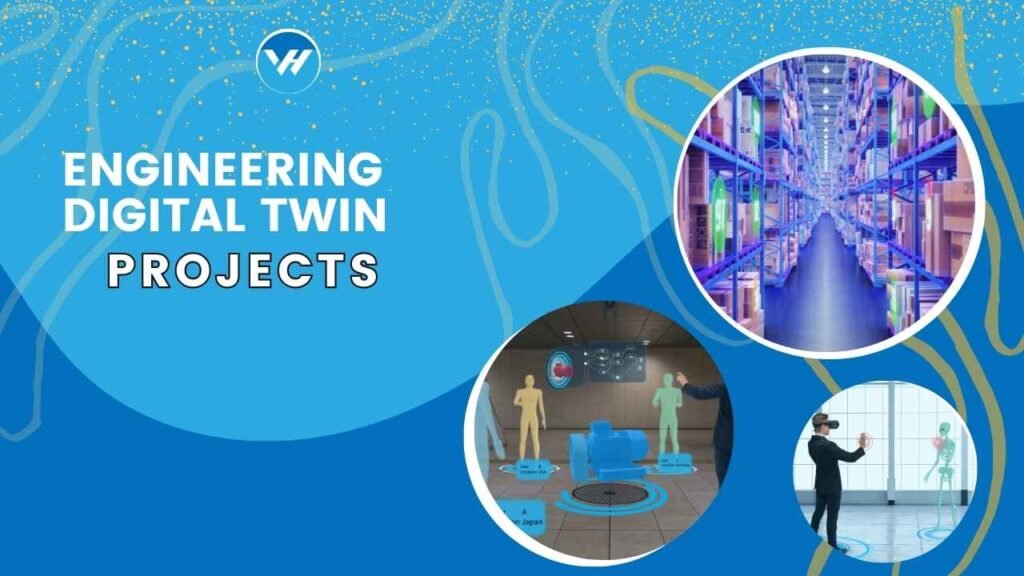Digital twins are revolutionizing the way we approach engineering projects. These virtual replicas of physical systems offer unprecedented insights and capabilities, allowing engineers to optimize, predict, and innovate like never before. Let’s dive into the fascinating world of digital twins and explore their impact on engineering.

Table of Contents
ToggleWhat is a Digital Twin?
A digital twin is a dynamic, virtual representation of a physical object or system. It captures data from the physical world and uses it to create a comprehensive digital model. This model can simulate, analyze, and predict the behavior of its physical counterpart. The concept of digital twins has evolved significantly since its inception, becoming a cornerstone of modern engineering.
Benefits of Digital Twins in Engineering
Digital twins offer numerous benefits that enhance engineering processes:
- Enhanced efficiency: By simulating and analyzing systems in real-time, digital twins help identify inefficiencies and optimize performance.
- Predictive maintenance: Digital twins enable predictive maintenance by monitoring the condition of assets and forecasting potential failures.
- Improved decision-making: With accurate, real-time data, engineers can make informed decisions that enhance project outcomes.
- Cost savings: Digital twins reduce costs by minimizing downtime, optimizing resource use, and preventing costly errors.
Applications of Digital Twins in Engineering
Digital twins are versatile tools with applications across various engineering fields:
- Aerospace engineering: Digital twins are used to monitor and maintain aircraft, ensuring safety and efficiency.
- Automotive industry: They help design, test, and improve vehicles, leading to better performance and reliability.
- Civil engineering: Digital twins are employed in smart city projects to manage infrastructure and utilities efficiently.
- Manufacturing: They optimize production processes, reduce waste, and enhance product quality.
How Digital Twins Work
The creation and operation of a digital twin involve several key steps:
- Data collection: Sensors and IoT devices gather data from the physical system.
- Data processing and analysis: This data is processed and analyzed to create a digital model.
- Simulation and modeling: The digital model simulates the behavior of the physical system under various conditions.
- Real-time monitoring: Continuous monitoring allows the digital twin to update and refine its model in real-time.
Creating a Digital Twin
To create a digital twin, follow these steps:
- Initial planning and objectives: Define the goals and scope of the digital twin project.
- Data acquisition: Collect data from sensors and other sources.
- Model creation: Develop a digital model based on the collected data.
- Integration with physical assets: Ensure seamless interaction between the digital twin and its physical counterpart.
Tools and Technologies for Digital Twin Projects
Several technologies enable the creation and operation of digital twins:
- IoT devices: Collect data from the physical world.
- AI and machine learning: Analyze data and create predictive models.
- Simulation software: Develop and test digital models.
- Cloud computing: Store and process large amounts of data efficiently.
Challenges in Implementing Digital Twin Projects
Despite their benefits, digital twin projects face several challenges:
- Data security and privacy: Ensuring the protection of sensitive data is crucial.
- Integration with existing systems: Seamlessly integrating digital twins with current infrastructure can be complex.
- High initial costs: The upfront investment for digital twin projects can be significant.
- Skill requirements: Specialized knowledge and expertise are needed to develop and maintain digital twins.
Future Trends in Digital Twin Technology
The future of digital twins is promising, with several emerging trends:
- Increased adoption in various industries: More sectors are recognizing the value of digital twins.
- Advancements in AI and machine learning: These technologies will enhance the capabilities of digital twins.
- Enhanced real-time capabilities: Improved real-time data processing will make digital twins more accurate and responsive.
- Greater focus on sustainability: Digital twins can help reduce environmental impact by optimizing resource use.
Virtual Help: Your Partner in Digital Twin Projects
Virtual Help is a service provider with an iOS and Android app that connects students with tutors and assignment help. Here’s how Virtual Help can assist with digital twin projects:
- Overview of Virtual Help: Learn about our platform and services.
- How Virtual Help assists in digital twin projects: We provide expert guidance and support for your projects.
- Benefits of using Virtual Help: Access specialized knowledge and resources to enhance your digital twin initiatives.
Getting Started with Your Digital Twin Project
Ready to start your digital twin project? Follow these steps:
- Identifying objectives: Clearly define your project goals.
- Selecting the right tools and technologies: Choose the best tools for your needs.
- Partnering with experts: Collaborate with professionals to ensure success.
- Continuous improvement: Regularly update and refine your digital twin.
Conclusion
Digital twins are transforming engineering by offering new ways to optimize and innovate. With the right tools, technologies, and partners like Virtual Help, you can harness the power of digital twins to enhance your projects and drive success. Start your digital twin journey today and unlock the future of engineering.
FAQs
- What industries benefit the most from digital twins?
- Industries like aerospace, automotive, civil engineering, and manufacturing see significant benefits from digital twins due to their complex systems and need for optimization.
- How does a digital twin improve efficiency?
- By simulating and analyzing systems in real-time, digital twins identify inefficiencies, optimize performance, and reduce downtime.
- What are the key components of a digital twin?
- The key components include data collection, data processing and analysis, simulation and modeling, and real-time monitoring.
- How can Virtual Help support my digital twin project?
- Virtual Help offers expert guidance, access to specialized resources, and continuous support to help you successfully implement and maintain your digital twin project.
- What are the initial steps to create a digital twin?
- Start by defining your project goals, collecting data, developing a digital model, and integrating it with your physical assets. Partnering with experts can also ensure a smooth implementation process.





